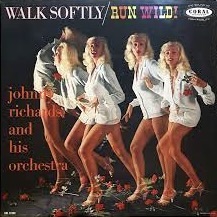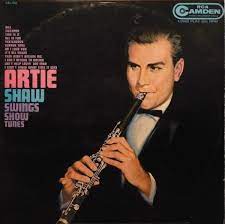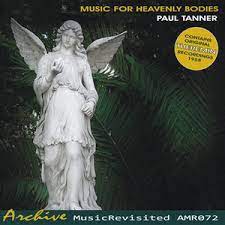
Daily Dose Of Jazz…
Norman Dewey Keenan was born on November 23, 1916 in Union, South Carolina. He began playing piano before learning bass at age 15.
In the mid~1930s he worked with Tiny Bradshaw, Lucky Millinder, Henry Wells, Earl Bostic, and Cootie Williams into the Forties, and jammed at Minton’s Playhouse around the same time.
Following World War II he worked with Williams again and with Eddie Cleanhead Vinson in 1947-49. Then he became the bassist in the house trio at the Village Vanguard until 1957. After backing and recording three albums with Harry Belafonte from 1957 to 1962, Keenan worked on the TV show Hootenanny.
He began playing jazz again in the 1960s, recording with Miriam Makeba, Chad Mitchell, Count Basie from 1965-74, recording twenty-one albums with the orchestra, and Roy Eldridge in 1966. Double bassist Norman Keenan transitioned on February 12, 1980 in New York City.
More Posts: bass,history,instrumental,jazz,music

Daily Dose Of Jazz…
Curtis Sylvester Lowe, Sr. was born on November 15, 1919 in Chicago, Illinois and raised in Oakland, California. He first learned to play soprano saxophone as a youth and studied briefly in Alabama before deciding to take up music full-time. Best known professionally as a tenor and baritone saxophonist, he played in traveling bands before the outbreak of World War II. Enlisting in the United States Navy in 1942, his unit band was full of noteworthy jazz musicians, including Vernon Alley, Wilbert Baranco, Buddy Collette, Jerome Richardson, Ernie Royal, and Marshall Royal.
In the 1950s Curtis worked extensively with Lionel Hampton and also played with Dave Brubeck, Little Esther, Johnny Otis, and Gerald Wilson. He led his own five-piece ensemble in 1952-1953. In 1958 he began a decade-long association with Earl Hines.
He was active locally in San Francisco, California and the Bay Area into the 1980s. Saxophonist Curtis Lowe Sr., who never recorded as a leader, transitioned at the age of 73 on October 29, 1993.
More Posts: bandleader,history,instrumental,jazz,music,saxophone

Daily Dose Of Jazz…
Johnny Richards was born Juan Manuel Cascales on November 2, 1911 in Toluca, Mexico to a Spanish father and a Mexican mother. He came to the United States in 1919 through Laredo, Texas along with his mother, three brothers and a sister. The family first lived in Los Angeles, California and then in San Fernando, California, where he and two brothers attended and graduated from San Fernando High School.
1930 saw Richards living in Fullerton, California where he attended Fullerton College. Working in Los Angeles from the late 1930s to 1952, before moving to New York City. He had been arranging for Stan Kenton since 1950 and continued to do so through the mid-1960s. He also arranged for Charlie Barnet and Harry James.
He led his own bands throughout his career and composed the music for the popular song Young at Heart in 1953. The song was made famous by Frank Sinatra and was covered by numerous others.
Arranger and composer Johnny Richards transitioned on October 7, 1968 in New York City of a brain tumor.
More Posts: arranger,bandleader,composer,history,instrumental,jazz,music

Daily Dose Of Jazz…
Johnny McClanian Best, Jr. was born in Shelby, North Carolina on October 20, 1913. He played piano as a child and learned trumpet from age 13. In the 1930s he worked with Les Brown, Charlie Barnet, and Artie Shaw from 1937 to 1939, then joined Glenn Miller’s orchestra for three years in 1939.
Before serving in the Navy during World War II as a lifeguard he spent a short time with Bob Crosby. During his service he played in Shaw’s military band and Sam Donahue’s band. Following a stint with Benny Goodman after the war, then he relocated to Hollywood, California where he worked with Crosby again on radio and played in numerous studio big bands in the 1940s and 1950s.
Touring with Billy May in 1953, later in the decade he led his own group locally. His trumpet can be heard along with Ella Fitzgerald on her album Get Happy. In 1964 he toured Japan with Crosby, and joined Ray Conniff for worldwide tours in the 1970s.
In 1982, he broke his back while working in his avocado orchard and used a wheelchair late in life, but was active into the 1980s. He played the trumpet solo on the Glenn Miller recording At Last, which was featured in the film Orchestra Wives.
Trumpeter Johnny Best, who played on Begin the Beguine which put Artie Shaw in business, transitioned on September 19, 2003.
More Posts: bandleader,history,instrumental,jazz,music,trumpet

Daily Dose Of Jazz…
Paul Tanner was born on October 15, 1917 in Skunk Hollow, Campbell County, Kentucky. One of six brothers, each could play an instrument and he learned to play the trombone at a reform school where his father was employed as superintendent. The brothers were playing in what he described as a strip joint when Glenn Miller heard him and offered him a position in his band.
He gained fame as a trombonist, playing with Glenn Miller and His Orchestra from 1938 to 1942, the group’s entire duration. When it disbanded, Paul joined the U.S. Army Air Force, becoming a part of the 378th Army Service Forces Band at Ft Slocum, New York. He later worked as a studio musician in Hollywood.
Tanner earned bachelor, master and doctorate degrees at the University of California, Los Angeles between 1958 and 1975. He was influential in launching UCLA’s highly regarded jazz education program in 1958. He became a professor at UCLA and authored or co-authored several academic and popular histories related to jazz.
He developed and played the Electro-Theremin, an electronic musical instrument that mimics the sound of the theremin. He can be heard performing on the opening title theme music of My Favorite Martian, on several 1966-1967 Beach Boys recordings, Good Vibrations, Wild Honey, I Just Wasn’t Made For These Times, and Tune L.
Trombonist, educator and inventor Paul Tanner transitioned from pneumonia on February 5, 2013 at the age of 95. Of all the members of the Glenn Miller Orchestra, only trumpeter Ray Anthony is still living.
More Posts: educator,history,instrumental,inventer,jazz,music,trombone



